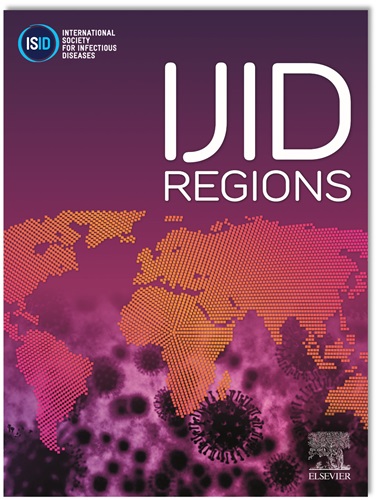Living Laboratory to operationalize One Health Surveillance of climate related emerging zoonoses
IF 4.8
2区 医学
Q1 INFECTIOUS DISEASES
引用次数: 0
Abstract
Background
The climate change impacts health and some climate sensitive infectious diseases are indicators that must be actively monitored. The Emilia-Romagna region (northeastern Italy) has adopted a one-health approach to the surveillance of some vector- diseases (VBDs) that became endemic or re-emerged (West Nile and leishmaniasis). Over the last two years, the region witnessed extreme weather events that unveiled the environmental vulnerability of its eastern part (Romagna). In 2023-24, massive floodings affected a territory being characterized by national parks, wetlands and semi-extensive agriculture and animal productions, with major consequences on the health and welfare of people and animals. Several research and diagnostic centers are active in the field of human, animal and environmental health making it an ideal context to operationalize one health surveillance.
Methods
A multistakeholder network was established to integrate clinical and laboratory diagnosis, vector and animal monitoring, epidemiological and genomic surveillance to allow early detection and characterisation of emerging and re-emerging zoonotic agents. Febrile neurologic surveillance has been put in place to investigate the contribute of ecological and climate trends on these disorders in the Romagna hot spot. The adopted transdisciplinary approach is aimed at designing proper science-based preventive strategies and policies.
Results and Discussion
More than 3000 cases of febrile neurologic syndromes were identified over the last 7 years (2017-2023) in Romagna, half of them were classified as Fever of Unknown Origin (FUO), at the time of hospital discharge, with higher incidence during summer months. Major FUO clusters were found in the areas of higher insect abundance, suggesting a possible role of vectorborne infectious agents, not yet included in the official surveillance and diagnostic panels. The integrated One Health genomic surveillance, of West Nile virus (WNV), showed the importance of continuous virus tracking and the value of studying viral genetic diversity to mitigate the impact of this VBD on public health. Moreover, the active WNV surveillance led to identify least-known arboviruses such as Tahyna virus an orthobunyavirus causing undifferentiated fever and influenza-like symptoms, with or without central nervous system involvement that may play a role in some of the identified FUOs. The integrated Leishmania surveillance allowed the identification of several phlebovirus species including neurotropic Toscana virus and other sandfly-transmitted viruses that have not yet been associated with animal and human diseases.
Conclusions
For its peculiar geo-ecological characteristics and its vulnerability to extreme climatic events, Romagna is particularly prone to climate sensitive vector and waterborne zoonoses. This ecological, productive, social, and scientific context makes it an ideal living laboratory in which to implement a one-health approach to bridge gaps in surveillance, deepen the epidemiology and guide effective public health responses to emerging climate related health threats, finally showing the value of transdisciplinary collaborations and active stakeholders’ engagement.
求助全文
约1分钟内获得全文
求助全文
来源期刊
CiteScore
18.90
自引率
2.40%
发文量
1020
审稿时长
30 days
期刊介绍:
International Journal of Infectious Diseases (IJID)
Publisher: International Society for Infectious Diseases
Publication Frequency: Monthly
Type: Peer-reviewed, Open Access
Scope:
Publishes original clinical and laboratory-based research.
Reports clinical trials, reviews, and some case reports.
Focuses on epidemiology, clinical diagnosis, treatment, and control of infectious diseases.
Emphasizes diseases common in under-resourced countries.

 求助内容:
求助内容: 应助结果提醒方式:
应助结果提醒方式:


